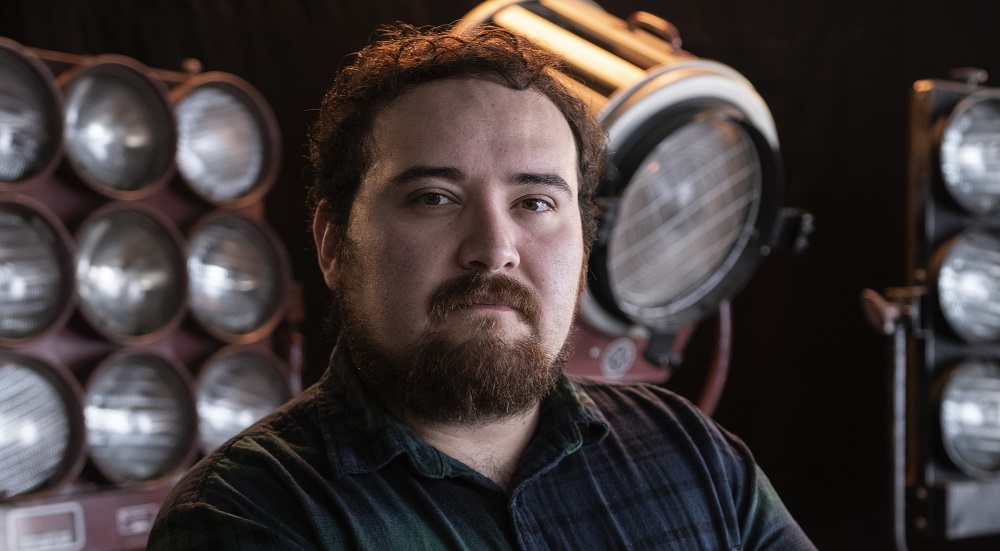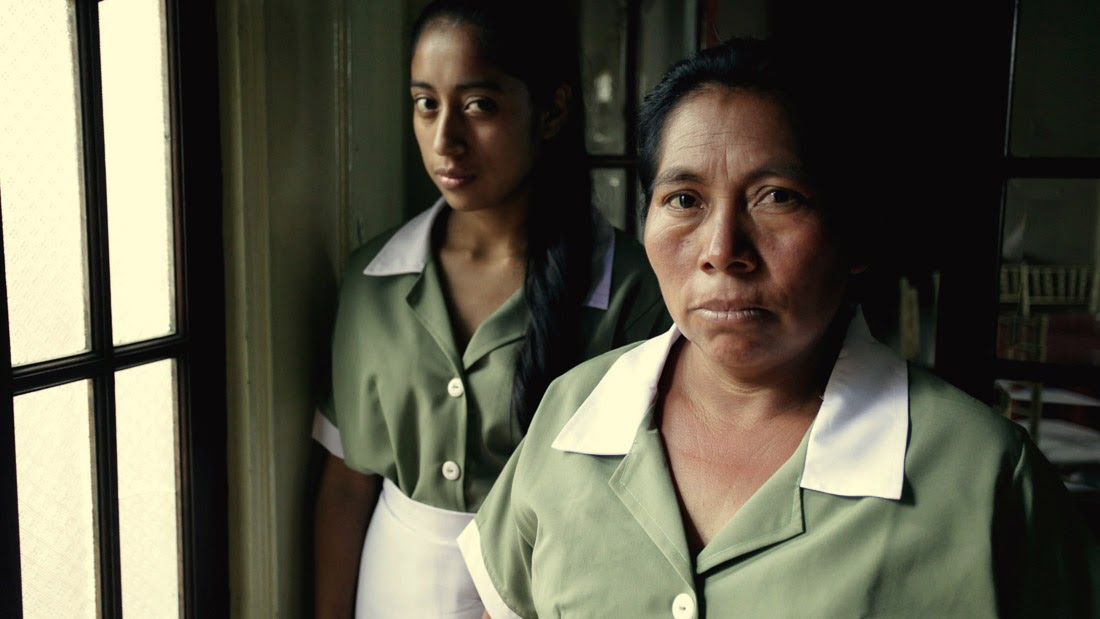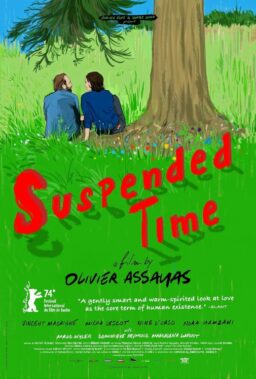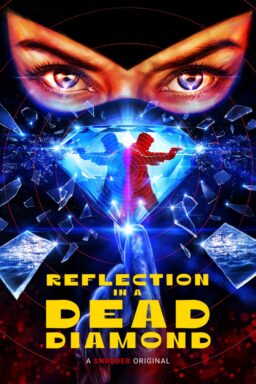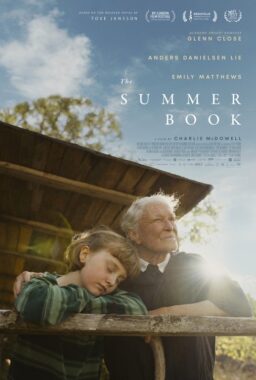Popular across the Americas, the centuries-old myth of a jilted woman’s weeping spirit has been repurposed with sociopolitical stakes in the stunning, genre-bending Guatemalan film “La Llorona.” For his third feature (following “Ixcanul” and “Temblores”), acclaimed auteur Jayro Bustamante uses the feared apparition to grapple with the genocide committed against indigenous people in his country, which reached its most horrifying stage under the mandate of military dictator Efraín Ríos Montt in the early 1980s. Bustamante, whose production company La Casa de Producción has put Guatemalan cinema on the map over the last few years, dives into horror for the first time to weave an eerie tale with enough nerve-racking jump-scares to satisfy genre palates, while reckoning with the Central American nation’s recent history. Through a set of tormented characters trapped inside a seemingly haunted home, as chaos reigns outside, the director confronts the perpetrator with his unforgivable sins and forces those around him to witness. Rising star María Mercedes Coroy (“Bel Canto”) plays a new housekeeper who arrives into this place already in disarray and whose intentions are puzzling. It’s only as the truth emerges in the cries of a terrifying figure that those involved, and the viewer, can begin to get a semblance of closure. To unpack his motivations and approach to this engrossing new effort, Bustamante shared some insight with us.
Was your decision to use the legend of La Llorona to approach such a dark chapter in Guatemala’s history driven by a desire to try a new genre, or did you feel horror was inherently the best vehicle?
Honestly, it was born more from a strategic point of view than a creative idea. The genocide in Guatemala is a topic my people don’t want to touch. They run away from and just don’t want to talk about it. Because of that, I was looking for the best way to tell this story and I thought, “What I have to do is insert the content of the story in a package they like, so that people want to see it because of the package in which it’s being delivered and they’ll get the themes inside.” I conducted a market analysis in Guatemala to understand what types of movie audiences consuming in the country, and I learned that 90% of them are watching superhero blockbusters and horror movies. Based on that I started researching how to tell this story in the horror genre and I landed on La Llorona. As you probably know, this character has great importance across Mesoamerica. She is a heroine, more precisely a terrifying heroine. I thought it’d be perfect to tell this story through La Llorona, and in a paranormal context.
How did you adapt this popular supernatural character to serve your narrative while still preserving some of the elements that would make her immediately recognizable?
I utilized La Llorona as an avenger. This allowed me to remove the misogynist aspect of the folktale, which describes it as a woman who cries for a man. In our version La Llorona cries for something much more relevant than a man. She cries for the suffering of an entire people. We transformed La Llorona into a sort of Mother Earth who cries for her missing children. Similarly, we used the horror genre to talk about genocide, from the perspective of the genocidal dictator and interpret his house as the house of the devil. Normally we know the stories of the victims, but we don’t now how the devil lives inside his home, how he apologizes for what he did, how he tries to keep his heroic façade. Both of these aspects helped me justify the use of the genre.
I also wanted to talk about the desolation of our indigenous peoples, because even today our own country doesn’t want to accept something as terrible as the genocide committed and doesn’t want to look for solutions. When that’s the reality you are facing, what can you hold on to? You hold on to magical realism, you hold on to deities, you hold on to ghosts, you hold on to otherworldly things that can help you survive. That’s why once La Llorona came to us everyone came together and we could dedicate ourselves to creating.

Tell me about the writing process. What new tools or restrictions did you face venturing into writing a genre screenplay? Was it significantly different than writing a more straightforward drama?
For me, writing a realist drama is more complicated than writing horror. Horror has a built-in language the spectator understands well and that allows for a lot of freedom to play with the story. I had a wonderful time writing a suspenseful horror screenplay because this genre offers elements that a realist drama doesn’t often allow for. For example, in horror you can start a scene with someone looking for somebody else in hall, and your mind immediately recognizes the scene. Your mind prepares for what the character might find. There’s a unique language and tropes in horror. If instead of using them only for jump-scares, you use them to create something more interesting intellectually, they give you great satisfaction. In a drama you can’t do that. If you see someone walking down the hall in a realist drama and the audience imagines where the scene is going, that scene doesn’t work. In horror not only does it work, but the fact that people expect what’s coming adds to it. It doesn’t matter if the audience knows where it’s going. It’s about what you do within that framework. Working in the horror genre was fascinating. I had a good time, and to have a good time when you are speaking about genocide is very hard.
From what was on the page, you had to create an unsettling atmosphere in order for the audience to be drawn into this otherworldly tale on sensorial level. How did you approach the project visually and sonically?
We had a very small budget to make the movie, so we couldn’t do shots just in case we needed them. We had to shoot only the necessary shots and each shot had to be “the shot” because we couldn’t do many takes. We couldn’t really play around doing inserts. We had to be sure of each thing we were going to film. Since we had those limitations, there were many other ideas we had to leave out. We just couldn’t shoot everything we wanted, so based on that we started simultaneously working with sound. The sound had to provide us with all the things we weren’t going to be able to shoot. Everything that stays outside of the frame, the sound had to bring it in. In that regard, “The Shining” was important to us since it deals with characters trapped in a house and is a master reference that has influenced so many movies. “The Others” was also a strong influence. Genre gives you so much freedom because it already comes with some marked limitations; within those limitations you have become more creative.
I understand that Rigoberta Menchú, who lived through this genocide and received the Nobel Peace Prize for her fight to protect the rights of indigenous people, has been a great supporter of the film. Watching the film a second time I believe she has a cameo in the trial scene, am I correct?
Yes, it’s her. Rigoberta Menchú is someone that I’ve admired since I was a little kid and I read her story. She is a very important figure for indigenous peoples. In Guatemala she has been the victim of racism, and some segments of society have tried to push a negative image of her. As I started to learn more about her and follow what she was doing, she became someone I wanted to be very close to.
After I made my first movie, “Ixcanul,” and we were campaigning for the Oscars in Los Angeles; she joined the promotional campaign and came to L.A. Although we had talked on the phone before, that’s how I first met her in person. We were together for a week and she helped me with the press. Later, when I was making “La Llorona” I put together a focus group with indigenous community leaders who I have a lot of appreciation, as well as people who are still fighting to find the remains of the disappeared and the children of the victims of the genocide; and I asked all of them whether they thought I was being disrespectful or not. I asked for their advice on how to tell this story correctly. Rigoberta was one of the most active members in that group and provided feedback, and I asked her, “Would you be willing to appear in the film?” She said, “Yes, not only me but my family too.” She came to act in the trial scene with her family, and she sat exactly where she had sat in the real trial of Efraín Ríos Montt. It was powerful and a pleasure to have her be a part of it. She is a woman that really understands the power of cinema as a language to talk about humanitarian causes.

In that same scene, we see the indigenous women who are testifying wearing an embroidered veil. Is there a specific significance, culturally or religiously, to this garment? This powerful image is also on the movie’s American poster.
It’s not a religious symbol. That fabric used as veil is called t’zute, which is part of their traditional attire. I made it transparent for cinematic reasons, because I felt that it gave a lot of depth and emotional texture to the character, to this woman telling her story. That moment was inspired by a real event. During the investigation and revelations around the genocide in Guatemala, there was a very famous case, the Sepur Zarco case, in which not only were many indigenous women kidnapped from their towns and their children were murdered, but they also were kept in military barracks as sex slaves for a long time. All of these women had a trial against those military men and all of them appeared in court wearing the t’zute over their faces out of modesty. They gave their testimony with their faces covered because they shared the incredibly horrific things that happened to them. At the end, they all uncovered their faces and said, “If we are not ashamed of telling what we lived through, we hope you are not ashamed of doing justice.” I took that phrase and that gesture from a real-life trial to put it in the film.
We hear more than one indigenous language in the film. How were these decided on and how were the lines in these tongues created for or with the indigenous actors?
For this film I worked with two indigenous languages. One is the Maya Ixil language, which is what you hear the women speak in the court sequence, because the Maya Ixil people were the most affected during the genocide. Inside the home, the indigenous people there speak Maya Kaqchikel. There’s no historical reason for that other than I grew up in a Kaqchikel community and it’s a language I love. I always try to put it everywhere in my work. All of the indigenous actors I worked with are bilingual. They all speak their indigenous Mayan language as well as Spanish, and many of them even speak a second Mayan language. Right from the very early construction of the character we shaped the dialogue in indigenous language with them.
This is your second time working with María Mercedes Coroy, who starred in “Ixcanul.” The character she plays here is almost mute, and yet she has an imposing presence existing between reality and a more spiritual plane. How did your relationship with her evolve in this project?
It was a great decision. I’m very happy to have worked with María Mercedes again. We at La Casa de Producción are her agents, and we have been able to witness how she’s grown as an actress. It was a joy to work with her again, to see her as a completely new actress, and to work with all the suggestions that she provided with the confidence she’s acquired through her career after “Ixcanul.” At the same time it was difficult, because we knew we were at risk of creating a symbolic character. We didn’t want just a symbolic character but one that had a strong internal story. María Mercedes told me, “I’m going to take inspiration from my grandmother.”
Her grandmother was a woman that lived through the war first-hand. When we met her, she told us that when the soldiers came to her house, her parents would hide her in the tapanco, which is like a small attic. They would wrap her up in a petate, a sort of carpet, and would put her up there so that the soldiers wouldn’t see her and rape her or kidnap her. As she told this story, the grandma said a heartbreaking phrase, “I learned to cry in silence wrapped in that carpet.” Maria Mercedes told me, “That’s the sentiment I’m going to keep for the character, because I don’t want the victims to ever have to cry in silence again. I want them to cry out loud. I want their cries to scare people. I want their cries to bring them justice.” When she told me this I realized it was absolutely her role. I didn’t have any doubts or any further questions.

On the opposite side of the spectrum we have Sabrina De La Hoz’s character, who is rather complex in her own way. In your previous film “Temblores” she played a devout religious leader and now she is the daughter of the dictator who is questioning what she has been told about the history of her country, and more importantly about her father’s acts. What’s the significance of her role in “La Llorona”?
I think that’s the most complicated role in the movie. With this story I wanted to talk about three generations in Guatemala. First, the older generation of the dictator and his wife, which, I believe, are part of the upper class that has lost empathy—not all of them but in general—and who haven’t done anything to minimize the social inequality in our country. Those people are lost and condemned. The only way they could be saved is for a spirit to posses them and make them see the pain they have inflicted on others.
Then there’s Sabrina’s character, who represents people my age. We are the children who were born during the war and the heirs of that pain, and the ones who still today live with fear. In Guatemala we still live under the power of the military men that were in power in the ’80s during the war. That hasn’t been eradicated yet, we are still fearful. When I started working on this movie a lot of people called me to dissuade me from making it. They told me, “Jayro, think about your safety. Think about your life.” The fear is very present. This generation, the one Sabrina and I are part of, is a lukewarm generation. We know what happened, and whether we are against what happened or not, we don’t dare speak out because we inherited that fear. That’s the role Sabrina is playing, and is so complex because she wants to open the doors to the truth but she can’t. She barely manages to keep them ajar. I told Sabrina, “You have to work on creating a woman who is tormented by that inheritance of pain she is carrying.” It was very painful for her to play the role because the character, Natalia, is very similar to her, is very similar to me, and to many of us who grew up around the same time. Lastly, there’s Ayla-Elea Hurtado’s role, she plays Sara, through whom I put the responsibly on the younger generation to open those doors and to do what we couldn’t do.
Your production company, La Casa de Producción, has almost singlehandedly reshaped the film landscape in Guatemala and given access to indigenous people to be part of it. Was this one of the core missions when you decided to found it?
I started La Casa de Producción with my mother, Marina Peralta, in 2009. At the time we thought, “This house is going to give a roof to all those stories that haven’t been told.” It’s also important to note that it wasn’t only that indigenous people weren’t seen on screen, but that nobody was really on screen because Guatemala used to rarely make movies. Even today we only make maybe three or four movies a year. The idea was giving voice to those untold stories. It should be normal for indigenous people to be part of this country’s stories because the majority of the Guatemalan population is indigenous. It’s only logical for them to have a voice.
Out of the actors that recurrently appear in your work, including Juan Pablo Olyslager who we saw in “Temblores” and now here, María Telón is the only that is in all of your films to date. What specific ideas or topics did you discuss with her for her character in “La Llorona”? She is the housekeeper of a despicable villain.
She is one of my best friends. She comes from a lineage of Mayan spiritual guides. She is a great philosopher and psychologist. She is much shier in real life or with the press than when she is acting. I have a lot of affection for her because is she is a great life teacher. We are like accomplices when we talk about the movies we are going to make together. In the case of “La Llorona,” when I called her to tell her about this character I said, “María, I’m really conflicted about proposing this character to you, because we are falling again into the same cliché of indigenous people playing housekeeping roles in the homes of white people.” But at the same time I explained to her that this character was important because even to this day in Guatemala, and other places, people believe that a good housekeeper is the one who does everything but whose presence is never perceived. They are like ghosts. We came back to the idea of this world of ghosts that walk through this house and who surround the guilty white characters.
María Telón told me, “I understand you don’t want to fall into clichés, but this is still so present in our reality that we have to show it like it is.” We had to work on her character to address this other form of slavery, because in Guatemala most housekeepers live in the home of their employer and are at their service 24 hours a day. Furthermore, not only is it expected for them to be at their service, but also housekeepers are expected to love their bosses, to be thankful for being allowed to serve them. That was the dramatic line María Telón and I followed for the character of Valeriana, who thinks, “Not only do I have to be this people’s slave, but I also have to root for them even though I know what they did to my people. They even want me to be thankful and to love them.” That was a very difficult notion we had to work through with this character.
Since the release of “Ixcanul” and the visibility that your subsequent work, and that of your actresses, has brought to struggles of indigenous people, do you feel the needle has moved in the right direction towards meaningful change?
I don’t want to say this was the result of “Ixcanul,” but if we think about the time since the movie was released and María Mercedes became an icon for young indigenous women in the country, there has been a change but these changes are very small. In order to close those gaps of inequality we need our entire society to be involved. For example, in order to survive I make commercials in Guatemala, but even when it’s for a commercial my production company follows the same rules: we have to be inclusive, we have to speak about human rights, and we have to include Mayan languages in our messages. I have noticed that clients are now more open to these demands than three years ago. Three years ago, if we asked for these things to be part of the content they would simply say, “Then you are not the right person for this and someone else will do it.” Now, there’s a bit more openness.
Based on that, do you feel a sense of responsibility to focus your artistic energy in telling stories about marginalized people or stories that speak to a relevant social issue? If so, was that always your driving force when you chose to become a filmmaker?
I don’t believe art in general has that responsibility per se. But, in my personal case, I come from a mother who, without being politically militant, has always been a great social activist. She has always been active trying to resolve injustices and searching for solutions. When I was a kid I would think, “I want to live in a big city and I want to make films and work in entertainment because I don’t want to be part of a non-profit or become a defender of a case.” I thought that because my mom was in that world and I thought I would end up doing that. But as I got older I realized I had that deeply ingrained in me and that I had to go back to fighting for those causes.
At the same time, I also believe that those of us who are creators of audiovisual works have a great responsibility. Guatemala has major educational problems. It’s a country where people read very little, and nowadays even less because people have made the switch from literature to audiovisual entertainment. That’s why I personally did make the decision to not make films that are solely for entertainment purposes. There are many others already making those types of films and they do it well, I have to make entertainment that has meaningful stories that deal with important topics. In a sense, La Casa de Producción is following that path. Every project we receive has to somewhat deal with the defense of human rights or with shining light on those who have been kept in the dark. We are very committed to that.
“La Llorona” is now playing on Shudder.
